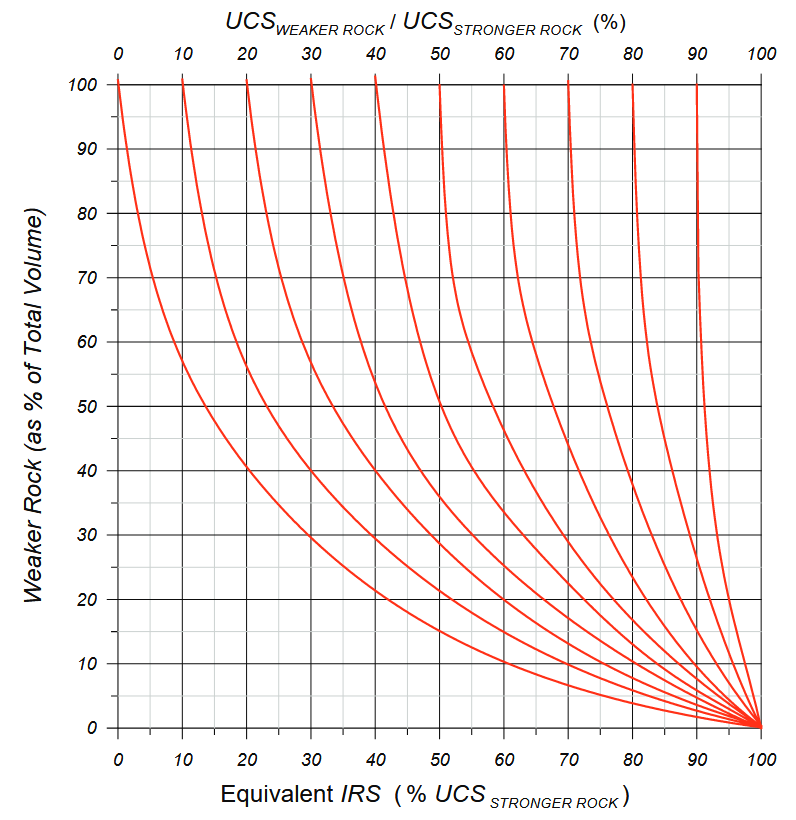IRS#
Laubscher [1] defined the IRS as the unconfined uniaxial compressive strength of the rock between fractures and joints. His definition accounts for the bias when estimating rock strength:
“It is important to note that the cores selected for testwork are invariably the strongest pieces of that rock and do not necessarily reflect the average values.”

Figure 1: Determination of average IRS where the rock mass contains weak and strong zones.#
From the guidelines of Read & Stacey: [2]
As an example [1], a strong rock sample (UCS = 150 MPa) contains zones of weak rock (UCS = 30 MPa) over 45% of its total volume. The relative strength of the weak rock is 20% of the strong rock (30/150 × 100).
Using Figure 1, draw a horizontal line from point Y = 45 on the Y-axis until it intersects the 20% relative strength curve. Then draw a vertical line to the X-axis, which provides an equivalent IRS strength value of 37% of the stronger rock, i.e. 55 MPa.